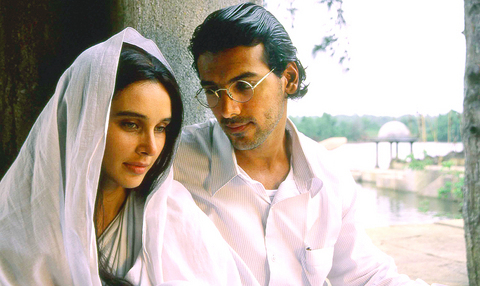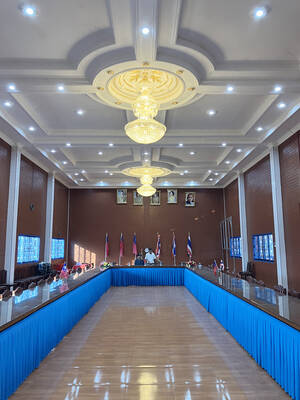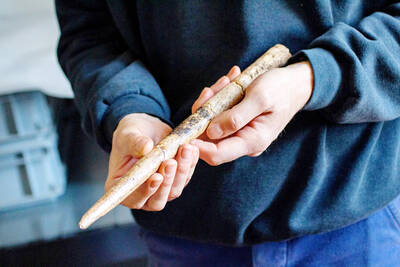India has made headlines as an emerging superpower, a land of high-tech multi-millionaires and a vast new market for American goods. But there is another India too, and it is not just the one of villages and ox carts that has always been best known in the West.
This is the disturbing India of the Hindu widow, a woman traditionally shunned as bad luck and forced to live in destitution on the edge of society. Her husband's death is considered her fault, and she has to shave her head, shun hot food and sweets and never remarry. In the pre-independence India of the 1930s, the tradition applied even to child brides of five or six who had been betrothed for the future by their families but had never laid eyes on their husbands.
Into this milieu now comes the director Deepa Mehta with Water, a lush new film about Chuyia, an eight-year-old widow in the India of 1938. She has barely met her husband but is banished by her parents to a decrepit widows' house on the edge of the Ganges. Chuyia is left there sobbing, in one of the most heart-wrenching scenes in the film, but she insists her parents will soon return for her.

PHOTO: AP
Even as it becomes clear that they won't, Chuyia's spirited, rebellious streak shines through, and she begins to change the way the other widows in the house view the world, as the independence movement of Mahatma Gandhi swirls around them. Chuyia has a particularly powerful effect on two people: Shakuntula, who begins to question a Hindu faith that subjects women who have lost husbands to such degrading lives, and Kalyani, a beautiful young widow who has been forced into prostitution by the head of the widow house. As the film unfolds, Kalyani ignores the taboos to fall tragically in love with a handsome young Gandhi nationalist.
The sorrowful film is nonetheless a triumph of conscience over blind faith, and a powerful message about how much, and how little, has changed in India. "I think it's slightly naive for me to think that films make a difference," Mehta, the director, said in a telephone interview from Toronto, where she lives half the year, when she is not in New Delhi. "But what it can do is start a dialogue and provoke discussion."
The film has provoked far more than that. In January 2000, Mehta was forced to shut down production of Water in Varanasi, one of India's holy cities on the banks of the Ganges, after Hindu nationalists protested that the film was anti-Hindu. Some 500 demonstrators took to the streets, ransacked the set and burned Mehta in effigy. She appealed to the state government for help, but fearing more violence, local officials asked the film crew to leave.
"In retrospect," Mehta said in a director's statement that accompanies the release of the film, "Water reflected what was taking place in India in some form or other: the rise of Hindu fundamentalism and high intolerance for anything or anybody that viewed it with skepticism. Therefore, we were a soft and highly visible target."
Mehta was not able to resurrect Water until four years later, and only then in neighboring Sri Lanka, where she shot under a fake title, Full Moon, so as not attract attention. By then Mehta had to recast the main characters. Lisa Ray, one of India's top models, took the role of the beautiful young widow Kalyani, and Seema Biswas, known in India for her role in the movie Bandit Queen, plays Shakuntula. John Abraham, a Bollywood superstar, portrays Kalyani's forbidden lover. For Chuyia, Mehta auditioned 50 girls but chose Sarala, an eight-year-old from a tiny village on the Sri Lanka coast who had never before acted.
Another problem was that Sri Lanka did not have the carved stone steps, that lead down to the Ganges, the purifying site of daily Hindu prayers and cremations. But Dilip Mehta, the film's production designer, recreated the steps on a stretch of a deserted river bank just south of the Sri Lankan capital, Colombo. The steps were essential to a film that uses water as a symbol of both purity and death.
Mehta, 55, is no stranger to Hindu protests. Her 1996 film about a lesbian relationship, Fire, the first in a trilogy, enraged fundamentalists in India, who burned down movie theaters. Her 1998 film, Earth, about the 1947 partition of India, caused no controversy, but it did contain scenes of the butchery that occurred between Muslims and Hindus at the time.
Mehta said she got the idea for Water a decade ago, when she was in Varanasi directing a one-hour television episode of The Young Indiana Jones Chronicles for George Lucas. One morning on the steps she was horrified to see a widow scampering on all fours searching for her glasses. When the widow couldn't find them, she sat down on her haunches to cry, completely ignored by the people around her.
"It wasn't shock, but I felt totally ignorant," said Mehta, whose father was a film distributor in the Indian city of Amritsar and graduated from the University of New Delhi. "Where the hell had I been?" Her own grandmother was a widow, but "she ruled the house," Mehta said. "She was the matriarch."
Today there are about 33 million widows in India, according to the 2001 census, and many in the rural areas are still treated like the outcasts in the film.
"All the traditions have eased, but they're still there," said Martha Chen, a lecturer in public policy at Harvard's John F. Kennedy School of Government and author of Perpetual Mourning: Widowhood in Rural India, published in 2000. "I met widows whose main lament was that at the weddings of their own children, they had to sit in the shadows."
Water has been screened in New Delhi and at the Kerala and Mumbai film festivals, and there are also plans for Water to open in July at 90 theaters in India, riots or no.
"I don't want to think about it," Mehta said. "I hope it all works out."

Taiwan Power Co (Taipower, 台電) and the New Taipei City Government in May last year agreed to allow the activation of a spent fuel storage facility for the Jinshan Nuclear Power Plant in Shihmen District (石門). The deal ended eleven years of legal wrangling. According to the Taipower announcement, the city government engaged in repeated delays, failing to approve water and soil conservation plans. Taipower said at the time that plans for another dry storage facility for the Guosheng Nuclear Power Plant in New Taipei City’s Wanli District (萬里) remained stuck in legal limbo. Later that year an agreement was reached

What does the Taiwan People’s Party (TPP) in the Huang Kuo-chang (黃國昌) era stand for? What sets it apart from their allies, the Chinese Nationalist Party (KMT)? With some shifts in tone and emphasis, the KMT’s stances have not changed significantly since the late 2000s and the era of former president Ma Ying-jeou (馬英九). The Democratic Progressive Party’s (DPP) current platform formed in the mid-2010s under the guidance of Tsai Ing-wen (蔡英文), and current President William Lai (賴清德) campaigned on continuity. Though their ideological stances may be a bit stale, they have the advantage of being broadly understood by the voters.

In a high-rise office building in Taipei’s government district, the primary agency for maintaining links to Thailand’s 108 Yunnan villages — which are home to a population of around 200,000 descendants of the Chinese Nationalist Party (KMT) armies stranded in Thailand following the Chinese Civil War — is the Overseas Community Affairs Council (OCAC). Established in China in 1926, the OCAC was born of a mandate to support Chinese education, culture and economic development in far flung Chinese diaspora communities, which, especially in southeast Asia, had underwritten the military insurgencies against the Qing Dynasty that led to the founding of

Artifacts found at archeological sites in France and Spain along the Bay of Biscay shoreline show that humans have been crafting tools from whale bones since more than 20,000 years ago, illustrating anew the resourcefulness of prehistoric people. The tools, primarily hunting implements such as projectile points, were fashioned from the bones of at least five species of large whales, the researchers said. Bones from sperm whales were the most abundant, followed by fin whales, gray whales, right or bowhead whales — two species indistinguishable with the analytical method used in the study — and blue whales. With seafaring capabilities by humans